How to breed your own cannabis strains
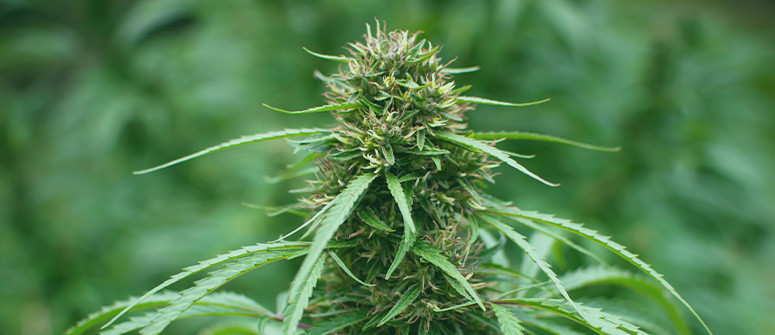
Breeding cannabis can range from fairly simple to incredibly difficult. Though it may seem too advanced for the home grower, it is possible! In this article, we explain a simple method for breeding your own cannabis seeds at home.
Contents:
If you know much about cannabis cultivation, then you’ll be aware that it can get fairly technical and hands-on. If you're ready to take the next step in your cannabis growing journey, why not try breeding your own strains?
For those skilled in the art of cultivation, a time comes when they may want to try creating their own, novel strains. Much like you don’t need a lab to grow weed, you also don’t need one to breed it. In fact, you can breed in exactly the same environment in which you grow—using nothing extra, other than plastic bags and a paintbrush.
This step-by-step guide covers the simplest way to breed cannabis at home.
Why would you breed your own cannabis strain?
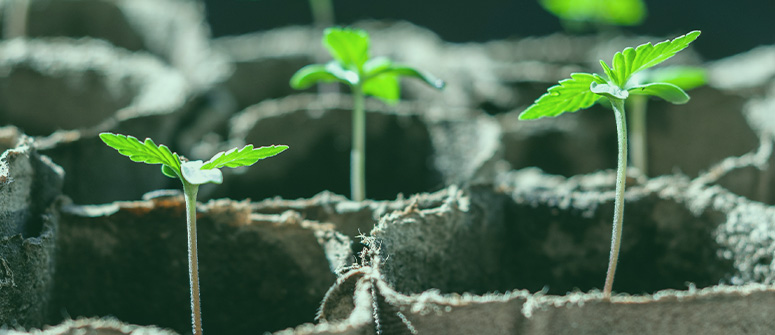
Breeding cannabis needn’t be an overly technical venture (though it can be), and this opens the door to breeding for a range of different reasons. For many, especially those who have mastered cultivation, breeding is simply the natural next step in their cannabis growing journey. Not only are they able to produce brand new strains, but it brings the grower even closer to the plants themselves, and the processes by which they live. So a primary reason for breeding is fun—or the pursuit of a passion.
Other reasons to breed your own strains include:
- To create a cannabis cultivar with the perfect balance of cannabinoids for your preferences.
- To create unique combinations of flavours.
- To preserve classic genetics.
- All of the above!
It’s likely that every person who chooses to breed cannabis begins from a place of passion and a desire to ever-increase their expertise. Being a skilled grower is a prerequisite for breeding.
How to breed your own cannabis strain: Step by step
Below, our 10-step guide will teach you how to breed new cannabis strains using perhaps the simplest method. Later on, we will outline more advanced methods—though we won’t go into them in detail in this guide (although we do elsewhere). If you’ve never bred cannabis before, then using the following method will help you to understand the process, before getting too bogged down in techniques designed to stabilise new genetics.
1. Choose your seeds
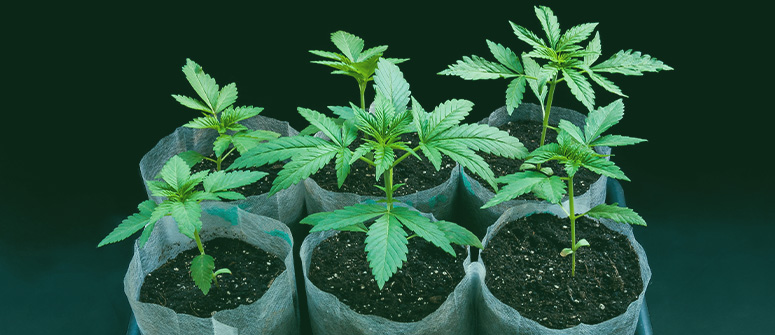
To breed cannabis, you need parent plants, as the chosen combination of parent plants will determine the characteristics of the offspring. So, choosing your seeds is one of the most important steps when it comes to breeding.
You can choose random regular seeds and just see what happens—and the results can sometimes be incredible—but you won’t learn so much. Better to choose two strains that you love, and that you think could complement one another, and go from there. If you choose the strains yourself, you can test the offspring against your expectations, and over time, this will help you to pick suitable pairings for subsequent breeding projects.
It's worth noting that you’ll need to use regular seeds, as opposed to feminized seeds, if you want to breed your own strains. Regular cannabis seeds produce 50% male and 50% female plants, whereas feminized seeds produce about 99.9% female plants, which makes them great for growing but poor for breeding.
2. Choose your substrate
For breeding, you’re best off growing in soil, rather than some inert media. This is because potency and speed of growth are less important than reliable, healthy growth—which soil supports. Plus, growing in soil is just easier, and this will give you more time to focus on learning new breeding skills.
For breeding, just like growing, you want to start with high-quality soil. This is rich in macro and micronutrients, and will help your plants to thrive, both above and below the ground. If you want to make life really easy for yourself, you can grow using homemade or store-bought super soil, which contains all of the necessary nutrients for the entire grow, which means you don’t need to think about feeding at all.
3. Grow your seeds and select parents
Once you’ve chosen your seeds and your soil, it’s time to sow your seeds and grow your plants! If you’re planning to breed a new strain, then you’ve probably somewhat mastered growing already, and so we won’t go into the nitty-gritty of how to grow cannabis here—but we do have plenty of information available about this.
Once your plants enter the flowering stage, you’ll see that some develop as females do, producing white pistils at the nodes, while others develop little sacs at the nodes—these plants are the males.
Soon, the males will begin releasing pollen, and the females will become pollinated and start producing seeds. You can let this happen naturally, or you can pick the best specimens from your selection and breed these together. The latter option will produce the best offspring, and it will teach you a lot about the breeding process, so we recommend getting a little more hands-on.
To keep things simple, the only real way to choose parents, at this point, is based on the vigour of their growth. Strong, healthy plants will probably produce the best buds.
You could also take clones and grow them to maturity, then choose parents based on which mother plants ultimately produce the best plants. However, this option adds months onto breeding and, while very effective for precision, is probably unnecessary for those trying breeding for the first time.
Unless you decide to let the plants take care of pollination themselves, you should separate the males and females once you’ve picked your parent plants. Otherwise, they will just pollinate themselves before you get a chance to collect and use their pollen.
4. Collect cannabis pollen and pollinate females
Once your chosen plants reach the stage at which they begin producing pollen, you can collect it from the males in order to pollinate the females. Female cannabis plants are ready to be pollinated about two to three weeks after they begin flowering. At this point, the calyxes will be open, but they’ll have long enough left to develop high-quality seeds.
If you don’t fancy collecting pollen, you can just leave a fan and a chosen male in a room with any number of chosen females and let nature do its work. This room can be a grow tent or another sealed space. It’s best to seal it because cannabis pollen can travel up to 10 kilometres, and you might interfere with someone else's grow if it escapes.
Below are three methods for collecting pollen from your male cannabis plants to apply to your females. To pollinate, simply use a fine paintbrush to apply the pollen to the female flowers. They will take care of the rest.
Method 1: With a toothbrush
Once pollen sacs begin to open, you can help to ease the pollen out using an electric toothbrush.
Place a sheet of baking paper beneath the pollen sacs, then place the head of an electric toothbrush behind them. Turn it on, and the vibration should cause pollen to come loose from the sac and fall onto the baking parchment.
Once on the parchment, the pollen can be used, or stored (if the necessary steps are taken).
Method 2: Shaking
Alternatively, you can shake branches to achieve the same effect as above. Select branches that have open pollen sacs, and shake them gently above the baking paper. This should release pollen, which can then be applied to female flowers.
Method 3: With a bag
A third method is to tie bags over branches that contain pollen sacs. As the sacs open and release their pollen naturally, this will collect inside the bags, and you can then use it as you please.
If you do this, tie the bags tightly enough that they’re sealed, but not so tightly that you damage the plants.
How to store cannabis pollen
In humid, moist environments, cannabis pollen has a very short lifespan. Therefore, if you're not using it immediately, it should be bagged up and stored along with humidity packs to increase its viability. Left out in the world, it can become inactive within as little as three days.
Storing pollen in the freezer helps to increase its life, as this keeps it safely away from moisture.
5. Deactivate leftover pollen
After you’ve collected the necessary pollen and pollinated your females, it’s probably best to kill your male plants. Cruel as this seems, they’re not of much use now, and they can still interfere with your grow as they will produce new pollen for weeks.
Once they’re removed, clean down the sides of the grow area with warm water and a little bleach. This will help to deactivate any pollen that’s clinging to the walls and ensure that the area is sterile for any later grows.
6. Wait, then remove seeds
Once you’ve pollinated the females, you’ll need to wait and let them develop their seeds. During this time, treat them well! The happier and healthier they are, the healthier their seeds will be.
Below we’ll explain how to remove seeds using either your hands or a machine.
After you’ve collected the seeds, you can still make use of the rest of the plant. Though it won’t be as potent as an unpollinated female, the buds will still contain cannabinoids and get you high. Likewise, you can use the sugar leaves and trim to make canna-oil or butter.
Method 1: By hand
Collecting by hand is the best option for those breeding at home. Dry your bud thoroughly, as it needs to crumble apart easily. Break it apart with your hands above a mesh screen. If it’s properly dry, the seeds will become apparent and collect on the mesh screen.
Method 2: By machine
Alternatively, you can use a dedicated machine to harvest cannabis seeds. However, this is only really worth it if you have a huge amount of bud to process. In most cases, buying a machine would be overkill.
7. Sort the seeds
You’re almost there! After collecting the seeds, you need to sort and clean them. This serves two purposes. First, you need to separate your seeds from any residual vegetative material (chaff), as this helps with storage and germination. Second (and optional), you can separate the lighter, smaller (worse) seeds from the heavier, bigger (better) seeds.
Method 1: With a tray and fan
A tray and a fan is an easy way to sort seeds. Simply place your collected seeds on a tray and have a fan blow air over them. This will blow off the lighter chaff and help to clean your seeds. If the fan is strong enough to move seeds, it can also help to separate the lighter seeds from the heavier ones, which can be helpful when it comes to choosing the best ones to germinate.
Method 2: With a zig-zag cleaner
A zig-zag cleaner can be made at home, or bought online. These machines use a vacuum to suck in chaff and lighter seeds, but leave heavier seeds where they are. They can be useful, but might be unnecessary depending on the scale of your operation.
Method 3: With a shaker table
A shaker table utilises a mesh screen. Place your collected seeds on top of the mesh and shake them. As they rub against the screen, the chaff will detach from the seeds, break up, and fall through the holes. Then you’ll be left with clean seeds.
8. Store the seeds
Cannabis seeds can remain viable for years if stored correctly. Much like many other organic materials, they should be stored in a cool, dark, and dry place. For cannabis seeds, moisture is the trigger that tells them to begin germinating. So, if you store them in a moist or humid environment, you might return to find them half-open and dead.
9. Check the germination rate
It’s worth checking the germination rate of your collected seeds so you have some idea of their quality. Knowing that seeds will germinate takes a huge weight off!
To test the germination rate, you must plant a number of seeds in optimal conditions. Then, you take the number of germinated seeds as a percentage of all the seeds planted—and this is your germination rate.
For example, say you plant 10 seeds and 7 germinate. In this case, you can estimate that your seeds have a germination rate of 70%. The more seeds you test, the more accurate the estimate will be.
10. Document everything
Finally, it’s important to label and document everything. Make sure you know exactly which parents certain seeds came from, when you harvested them, and so on. Breeding is not just about getting a batch of seeds. In many cases, you will go on to grow these seeds and use them to continue your breeding efforts. And even if you just grow them to smoke the female buds, you’ll want to know which pairings created which offspring.
If you don’t document the results, you’ll have no way of knowing what worked, and thus any future breeding attempts will be shrouded in unnecessary ignorance.
More advanced cannabis breeding techniques
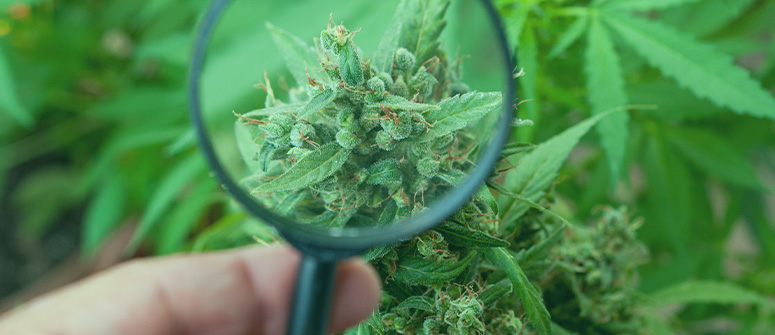
The above method is the easiest for those who want to try out breeding. However, there are more advanced techniques that can be useful in certain situations, and that will take your breeding to the next level.
Selfing
If you want to maintain the exact genetics of a single plant, then you can use a technique called selfing.
Selfing involves stressing a female plant so that it becomes a hermaphrodite. This means that it produces male sex organs too, which produce pollen. Therefore, it can pollinate itself.
This technique means the genetics are almost identical to the mother plant, and you can accurately predict what the offspring will be like.
Backcrossing
Backcrossing involves pollinating a plant with pollen from either a genetically indentical clone or parent. This means that no new genetics are introduced. Over generations, this method helps to stabilise a strain’s genetics, meaning you can be confident in how seeds will grow in future generations.
Making F1 hybrids
F1 hybrids are the first generation of progeny from two inbred lines. Stable, predictable F1s can be very difficult to breed. However, genuine ones offer very vigorous and robust growth, and tend to outperform other cannabis seeds.
Creating F1 hybrids takes a lot of time and practise, as it necessitates two very stable parent strains.
Breeding cannabis: Practise makes perfect
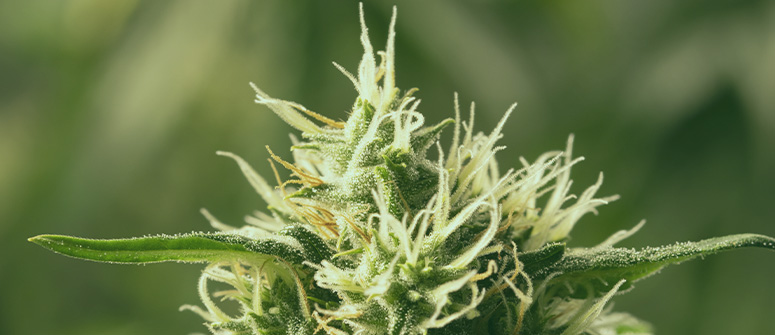
Breeding cannabis is a serious undertaking. It’s not too difficult to breed two plants together and see what happens, but going any further than this is a big commitment. New seeds don’t really constitute new strains, as, without proper care stabilisation, any characteristics will be lost in later generations. So true cannabis breeding takes years, really.
But it’s exciting, and very rewarding. The more plants you breed, the easier it becomes to get a feel for good pairings, and the better the results will be!




